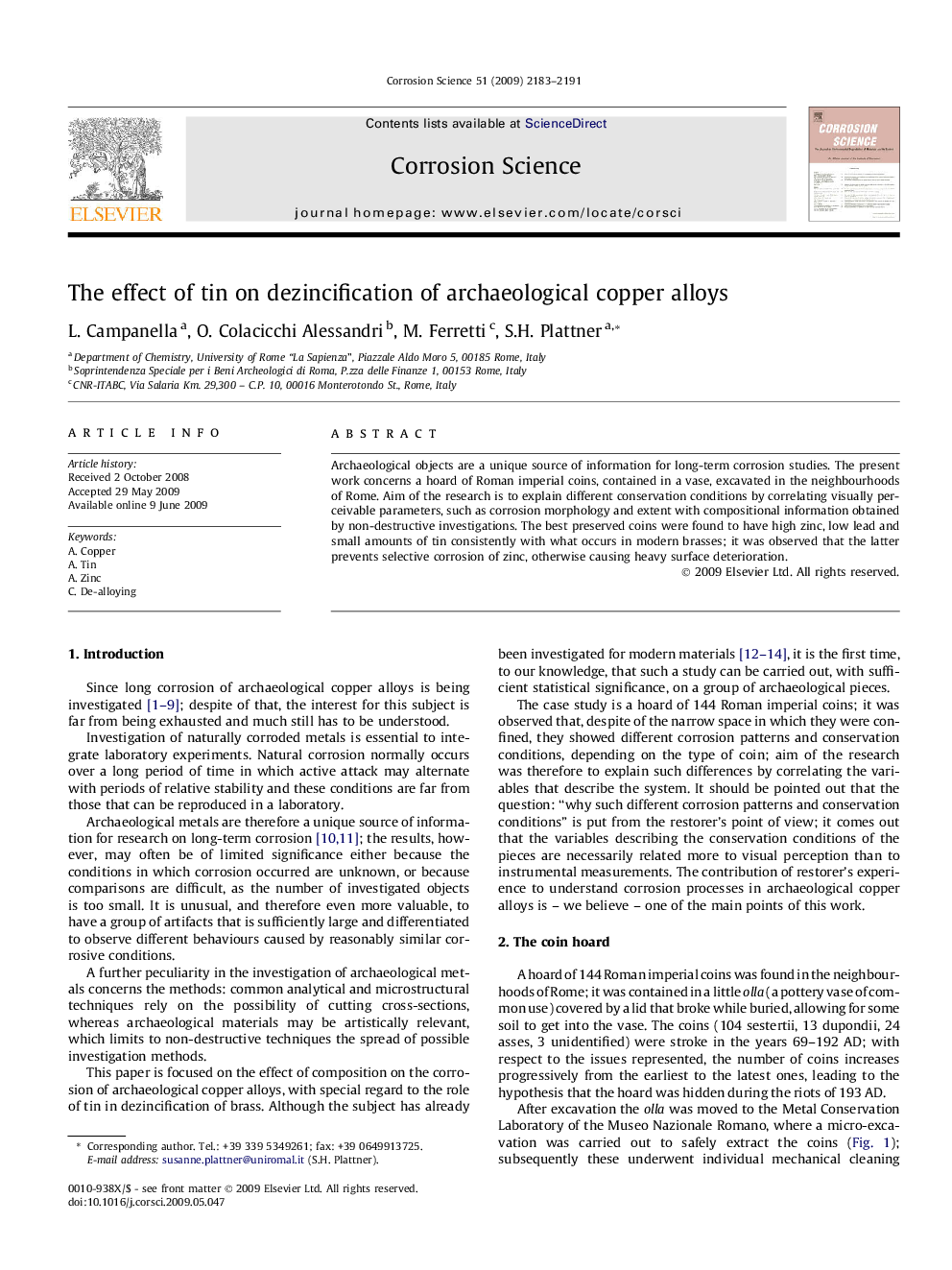| Article ID | Journal | Published Year | Pages | File Type |
|---|---|---|---|---|
| 1470926 | Corrosion Science | 2009 | 9 Pages |
Abstract
Archaeological objects are a unique source of information for long-term corrosion studies. The present work concerns a hoard of Roman imperial coins, contained in a vase, excavated in the neighbourhoods of Rome. Aim of the research is to explain different conservation conditions by correlating visually perceivable parameters, such as corrosion morphology and extent with compositional information obtained by non-destructive investigations. The best preserved coins were found to have high zinc, low lead and small amounts of tin consistently with what occurs in modern brasses; it was observed that the latter prevents selective corrosion of zinc, otherwise causing heavy surface deterioration.
Keywords
Related Topics
Physical Sciences and Engineering
Materials Science
Ceramics and Composites
Authors
L. Campanella, O. Colacicchi Alessandri, M. Ferretti, S.H. Plattner,
